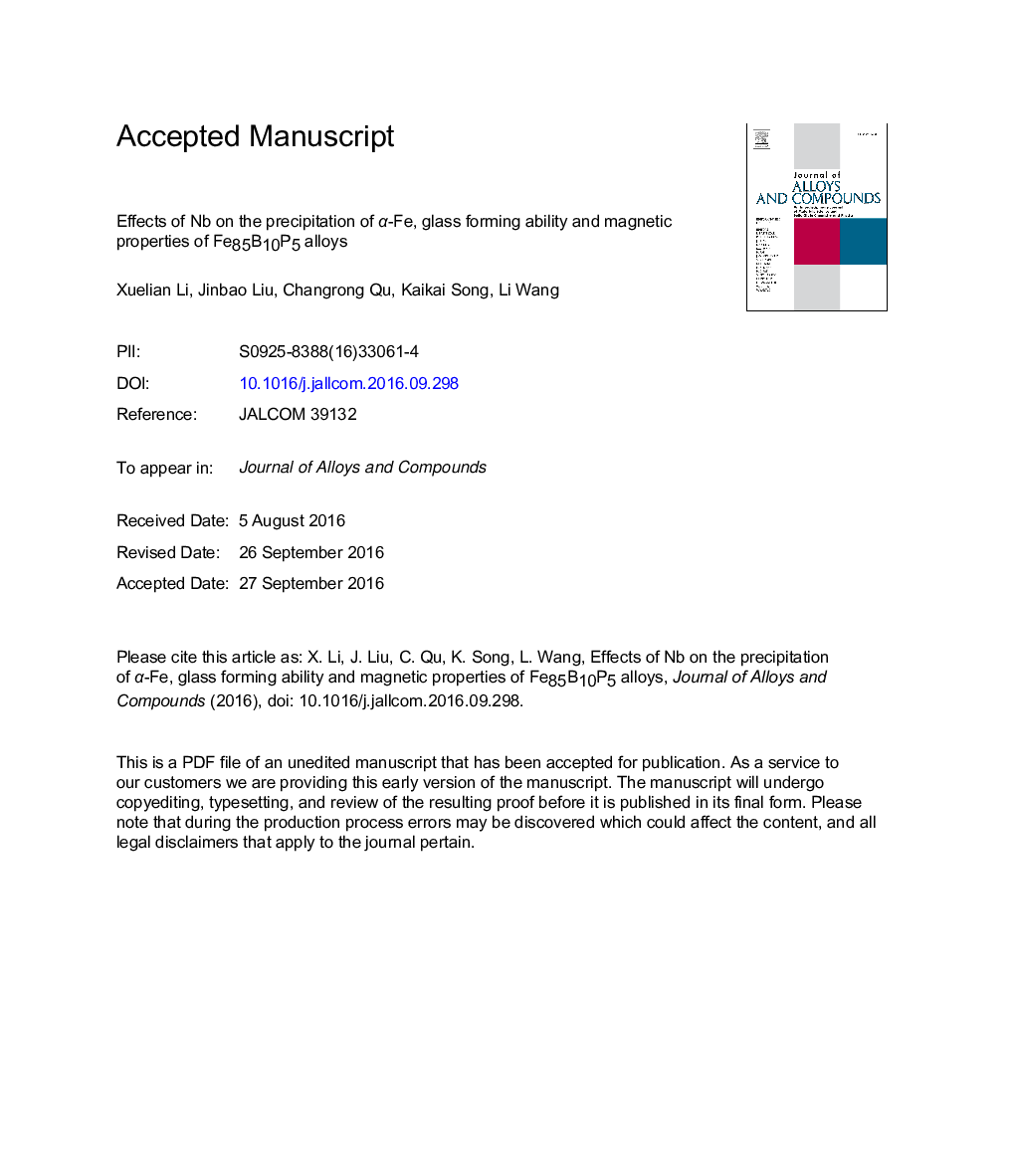| Article ID | Journal | Published Year | Pages | File Type |
|---|---|---|---|---|
| 5460953 | Journal of Alloys and Compounds | 2017 | 20 Pages |
Abstract
The influence of Nb substitution for Fe on the precipitation of α-Fe, the glass forming ability (GFA) and the magnetic properties of the (Fe85âxB10P5Nbx) (x = 0, 1, 3, 4 and 5 at.%) alloys are investigated. Based on the XRD measurement of the melt-spun ribbons, it is found that the dominant crystal plane in α-Fe precipitates gradually changes from (200) to (110) and then only broad peaks without any appreciable crystalline peaks can be observed with increasing Nb content from 0 at.% to 5 at.%. Such microstructural evolution are clarified with other elements M (M = Ni, Mo, Y, Cr and Si) addition, and can be well explained based on the Bravais-Friedel law and the negative mixing enthalpy between Nb(or M) and Fe (or B). Furthermore, the strong bonding between Nb and Fe atoms results in the formation of FeNb clusters and then enhances short-range-order clusters, leading to the enhance of GFA and decrease of coercive force from 13.82 A/m to 2.3 A/m with the addition of Nb content less than 4 at.%. With further increasing Nb content, the coercive force becomes higher, which is contributed to the formation of NbB clusters and the poor solute-solute avoidance.
Related Topics
Physical Sciences and Engineering
Materials Science
Metals and Alloys
Authors
Xuelian Li, Jinbao Liu, Changrong Qu, Kaikai Song, Li Wang,
